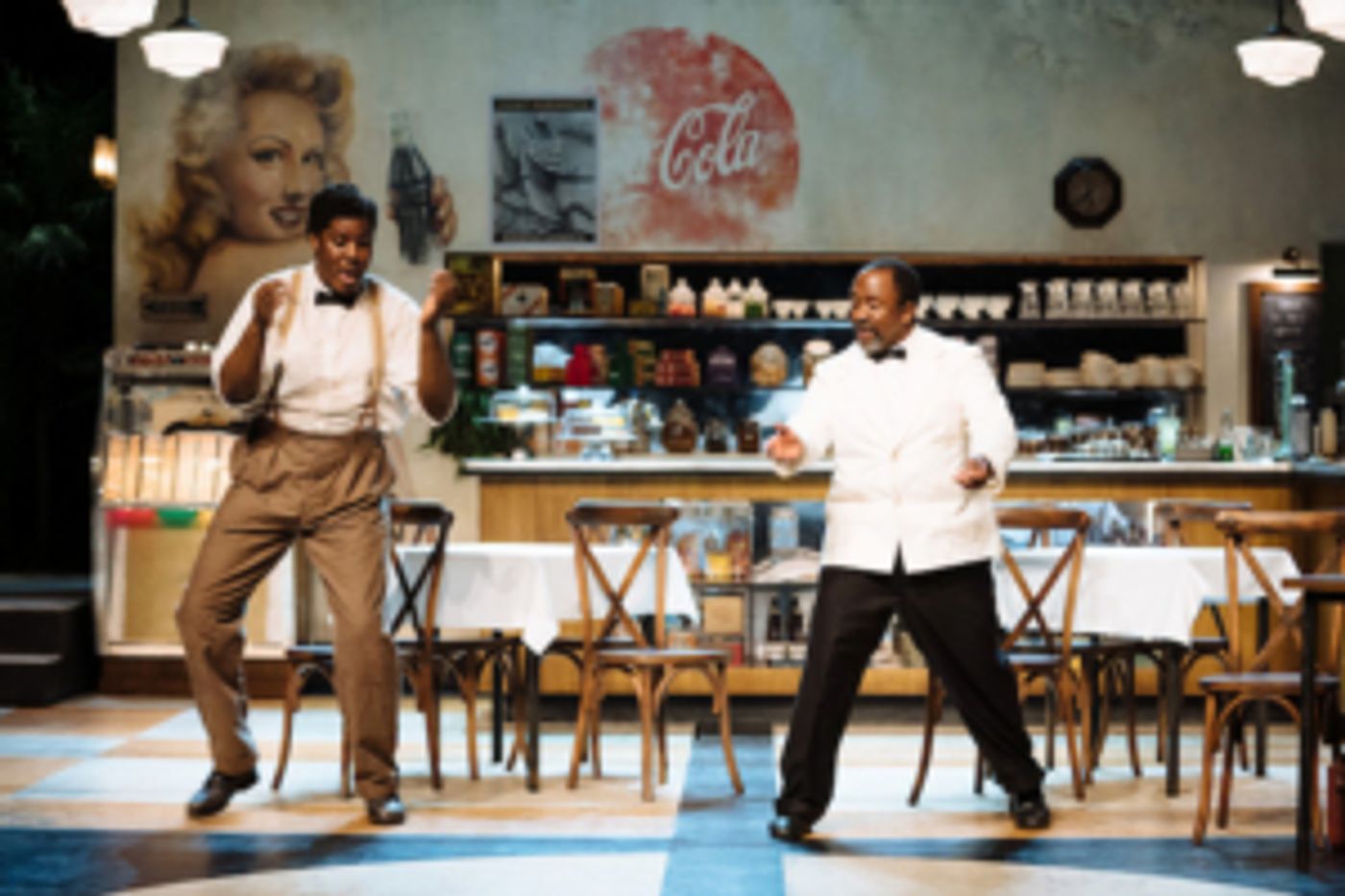Review: 'MASTER HAROLD'...AND THE BOYS, National Theatre

![]() Athol Fugard's 1982 play, set in 1950s Port Elizabeth, is inspired by his own boyhood in apartheid-era South Africa - as Fugard says in a programme note, it's "the most intensely personal thing I have ever written".
Athol Fugard's 1982 play, set in 1950s Port Elizabeth, is inspired by his own boyhood in apartheid-era South Africa - as Fugard says in a programme note, it's "the most intensely personal thing I have ever written".
Like his teenage character Harold (Fugard's actual first name), his father was disabled and his mother tried to keep them afloat via a struggling tearoom. And, crucially, Fugard also had a complex relationship with Sam and Willie, their black employees - encapsulated here in an increasingly gripping 100-minute piece of atonement.
At first, the dynamic between the trio is friendly. Sam and Willie, who are in their thirties, are practising for an upcoming ballroom dancing competition, and, despite scoffing at the idea of ballroom as "art", the 17-year-old Hally (short for Harold) gets drawn into their excitement, even seeing it as good material for a homework assignment. But his mood is turned by the news, via a phone call from his mother, that his alcoholic father is returning home from hospital, and the play takes a vicious turn that still has audiences gasping.
Of course, the initial seeming friendliness contains warning notes. Hally speaks to the older men in an insufferably patronising way, praising himself for "educating" Sam, as Tolstoy did his peasants, and switching between chat and orders to return to work when it suits him. He's happy enough to speak of the need for social reformers, but not prepared to have his white-skinned authority challenged (such conversations take place while Sam waits on Hally, and Willie mops the floor), and he casually refers to their dancing as characteristic of the "primitive black society".
Nevertheless, it's a patient slow burn of a set-up, kept engaging here by the strength of the three performances. Lucian Msamati is both a physically and mentally agile Sam, with dancing infusing his movement; even laying a table, he skips and glides like Fred Astaire. The status which that skill infers sometimes bleeds over into a complacent manner as well - until, with grim knowledge of its danger, he reels it back in again and acts as dutiful servant.
He has a wonderful rapport with Hammed Animashaun's big, earnest Willie, coaching the latter about dancing and life. (A stumbling Willie, struggling to both master the quickstep and look relaxed, grumbles he was "happy" before discovering ballroom.) Neither are saintly, though, with Willie freely admitting to beating his wife Hilda - who, understandably, is now reluctant to show up for dance practice. It's one of several critical examinations of "masculinity".
But it's the relationship between Sam and Hally that's really crucial, and that particular dance is faultlessly performed by Msamati and Anson Boon. Their dynamic flips back and forth - teacher and student, father and son - until a climax that exposes all of the ugliness of racial oppression which operates under a system like apartheid, how it poisons humanity and corrodes the soul.
Though Hally is just a gawky boy in school uniform - and Boon both looks and acts convincingly juvenile - he's already warped by this social inheritance, complicated further by his love/hate feelings towards his bigoted drunk of a father. It's a resonant reminder of the horrors of tribalism and hatred, of "other"-ing certain groups, and, in the tragic climax, how that only creates hurt and misery on both sides.
It's certainly clear here that Hally is a loser in this scenario, risking what appear to be the only positive relationships in his life by giving into a weak, cowardly impulse. His talk of schoolmates has a forced air of bravado, Boon suggesting that this is an isolated, angry kid who in some ways has had to grow up too fast, and in others is achingly vulnerable.
That certainly doesn't excuse his behaviour, though, and even if Fugard wasn't prepared to fully exorcise his shame and regret here, Msamati's towering performance would ensure the audience's sympathies. Seeing his dignified, caring, witty Sam brought low is like a punch to the gut - Msamati showing both the open wound, and the strength it takes to try to be the bigger man - and Animashaun's Willie is there to bear witness.
One could definitely argue that the play is overwritten in parts, Fugard determined to teach a lesson as much as convey the drama. With a cast as articulate as this, it feels unnecessary. However, Roy Alexander Weise makes some excellent choices in his powerful revival, not least emphasising the idea of ballroom dancing as a vision for a world free from conflict, and where men like Sam and Willie can have grace, beauty and aspiration - dancing centre stage in all their finery instead of clearing up their master's messes in dark corners.
Msamati captures this sense of transcendence through his lyrical evocation of a ballroom competition. And Rajha Shakiry's exquisite design - featuring a period tearoom with glass-fronted counter, faded Coke sign and rain pattering rhythmically on the skylight - opens up beautifully at the climax for a romantic, hopeful vision, gorgeously choreographed by Shelley Maxwell. After seeing the worst of humanity, it's cathartic to glimpse the best.
"Master Harold"...and the boys at the National Theatre until 17 December
Photo credit: Helen Murray
Reader Reviews
Videos

